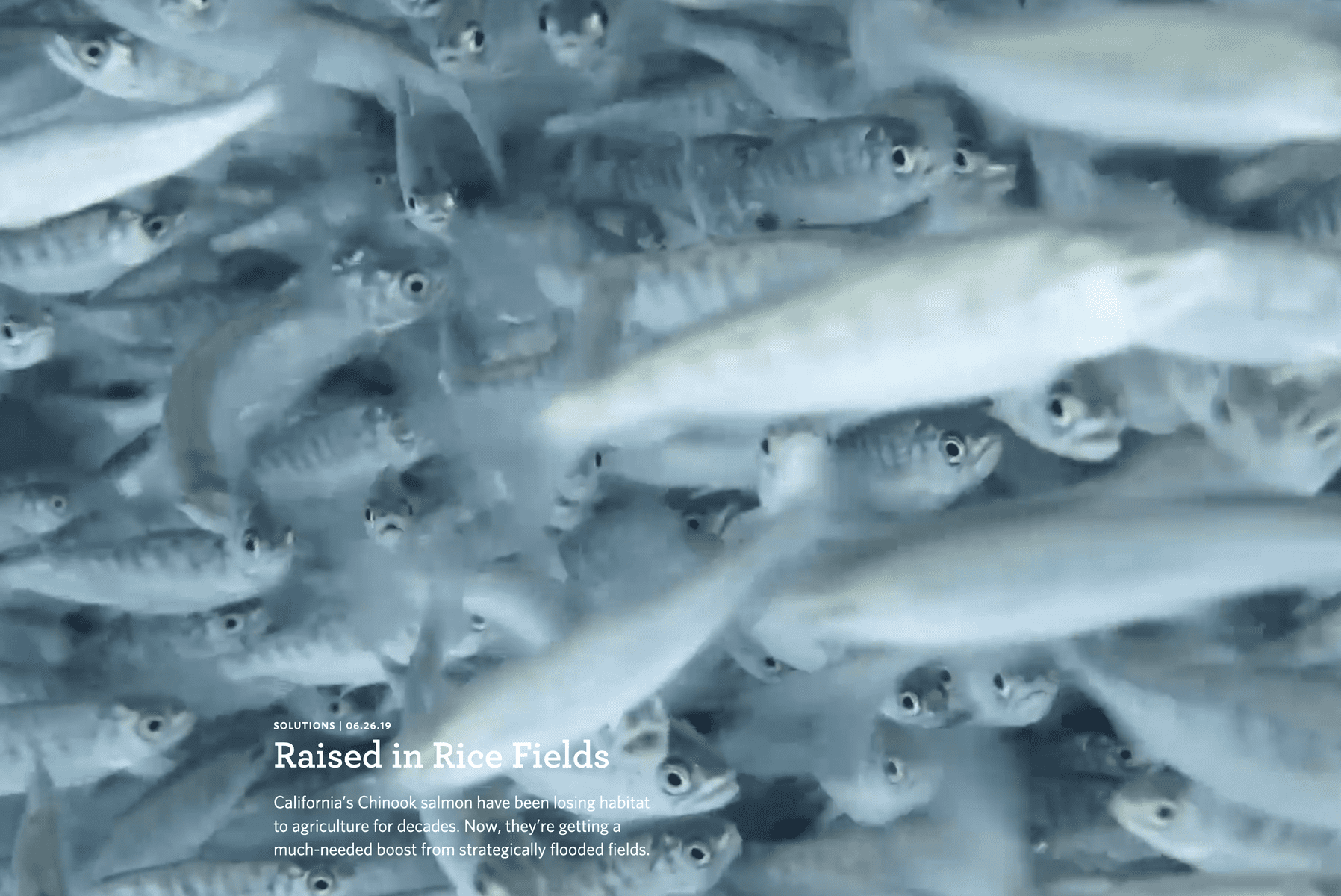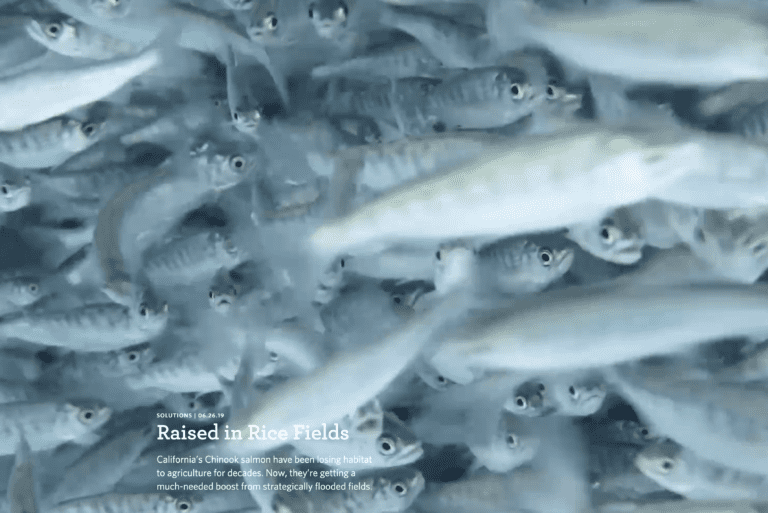Snow geese erupt against a blue sky trimmed with fresh, white clouds. The air is so clear you can see for miles, east to the distant peaks of the Sierra Nevada and west to the gentle slopes of the Coast Ranges. But Carson Jeffres and Jacob Katz are less interested in the view above them than the one at their feet. Standing knee-deep in a flooded field at Knaggs Ranch, a rice farm near Sacramento, they peer into a floating cage made of PVC pipe and mesh and prepare to check on its unusual inhabitants.
Jeffres opens the top of the cage and dips in a small net. When he pulls it out, a pair of plump fish, each the size of a pinky finger, wriggle inside. These are young Chinook salmon—a species imperiled in California. He holds up his catch for Katz to admire.
The two men are fish ecologists—Jeffres at the University of California, Davis, and Katz at the conservation-based non-profit California Trout—and they are testing a wild idea. To help save the Chinook, they are using rice fields as winter nurseries for young salmon migrating from their natal streams to the ocean.
Over the last century, water agencies have built levees along most of the state’s rivers to control floods and supply water to communities and farmers alike. But these levees also bar young Chinook from the floodplains that historically provided safe, food-rich places to grow on their journey to the Pacific. Today, more than half a million acres of these former floodplains in California’s immense interior valley are occupied by rice farms. Repurposing them as surrogate floodplains during the months they would otherwise lie fallow could be key to restoring endangered populations of wild-spawning Chinook.
“We can’t restore those floodplains,” says Rene Henery, California science director for the conservation non-profit Trout Unlimited, “but we can recover the functionality that the fish evolved with.”
California’s Central Valley is a flat expanse, flanked on either side by mountain ranges, that extends 400 miles down the middle of the state. Salmon once flourished in the streams and rivers that course through it. “One or two million came back every year,” says Peter Moyle, a fish ecologist at UC Davis. “They were up to 60 pounds and close to a meter long.”
For millennia, adult Chinook in California returned to spawn in the upper reaches of waterways that flow down from […]
Full article: Raised in Rice Fields



